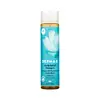What's inside
What's inside
 Key Ingredients
Key Ingredients

 Benefits
Benefits

 Concerns
Concerns

 Ingredients Side-by-side
Ingredients Side-by-side

Water
Skin ConditioningSodium Methyl Cocoyl Taurate
CleansingCocamidopropyl Hydroxysultaine
CleansingCocamidopropylamine Oxide
CleansingGlycerin
HumectantCocamidopropyl Betaine
CleansingGlyceryl Laurate
EmollientEpilobium Angustifolium Flower/Leaf/Stem Extract
Skin ConditioningSalix Alba Bark Extract
AstringentSodium Chloride
MaskingPanthenol
Skin ConditioningSalicylic Acid
MaskingMenthol
MaskingMelaleuca Alternifolia Leaf Oil
AntioxidantArctium Lappa Root Extract
Skin ConditioningChamomilla Recutita Flower Extract
MaskingArctostaphylos Uva-Ursi Leaf Extract
Skin ConditioningMelia Azadirachta Extract
Skin ConditioningVitex Trifolia Extract
Skin ConditioningBerberis Aquifolium Extract
Skin ConditioningZanthoxylum Zanthoxyloides Bark Extract
Skin ConditioningPhenoxyethanol
PreservativeEthylhexylglycerin
Skin ConditioningTocopheryl Acetate
AntioxidantAloe Barbadensis Leaf Juice
Skin ConditioningWater, Sodium Methyl Cocoyl Taurate, Cocamidopropyl Hydroxysultaine, Cocamidopropylamine Oxide, Glycerin, Cocamidopropyl Betaine, Glyceryl Laurate, Epilobium Angustifolium Flower/Leaf/Stem Extract, Salix Alba Bark Extract, Sodium Chloride, Panthenol, Salicylic Acid, Menthol, Melaleuca Alternifolia Leaf Oil, Arctium Lappa Root Extract, Chamomilla Recutita Flower Extract, Arctostaphylos Uva-Ursi Leaf Extract, Melia Azadirachta Extract, Vitex Trifolia Extract, Berberis Aquifolium Extract, Zanthoxylum Zanthoxyloides Bark Extract, Phenoxyethanol, Ethylhexylglycerin, Tocopheryl Acetate, Aloe Barbadensis Leaf Juice
Sodium Chloride 36%
MaskingCocamidopropyl Betaine
CleansingCoco-Betaine
CleansingPotassium Cocoate
EmulsifyingCoco-Glucoside
Cleansing1,2-Hexanediol
Skin ConditioningCamellia Sinensis Leaf Extract
AntimicrobialCentella Asiatica Extract
CleansingMelaleuca Alternifolia Leaf Extract
PerfumingLavandula Angustifolia Extract
Skin ConditioningMentha Citrata Leaf Extract
AstringentMentha Piperita Leaf Extract
Skin ConditioningFreesia Refracta Extract
Skin ConditioningChamomilla Vulgaris Extract
Skin ProtectingRosmarinus Officinalis Leaf Extract
AntimicrobialPanthenol
Skin ConditioningIllicium Verum Fruit Extract
PerfumingScutellaria Baicalensis Extract
AntimicrobialButylene Glycol
HumectantGlycolic Acid
BufferingParfum
MaskingSodium Chloride 36%, Cocamidopropyl Betaine, Coco-Betaine, Potassium Cocoate, Coco-Glucoside, 1,2-Hexanediol, Camellia Sinensis Leaf Extract, Centella Asiatica Extract, Melaleuca Alternifolia Leaf Extract, Lavandula Angustifolia Extract, Mentha Citrata Leaf Extract, Mentha Piperita Leaf Extract, Freesia Refracta Extract, Chamomilla Vulgaris Extract, Rosmarinus Officinalis Leaf Extract, Panthenol, Illicium Verum Fruit Extract, Scutellaria Baicalensis Extract, Butylene Glycol, Glycolic Acid, Parfum
 Reviews
Reviews

Alternatives
Ingredients Explained
These ingredients are found in both products.
Ingredients higher up in an ingredient list are typically present in a larger amount.
Cocamidopropyl Betaine is a fatty acid created by mixing similar compounds in coconut oil and dimethylaminopropylamine, a compound with two amino groups.
This ingredient is a surfactant and cleanser. It helps gather the dirt, pollutants, and other impurities in your skin to be washed away. It also helps thicken a product and make the texture more creamy.
Being created from coconut oil means Cocamidopropyl Betaine is hydrating for the skin.
While Cocamidopropyl Betaine was believed to be an allergen, a study from 2012 disproved this. It found two compounds in unpure Cocamidopropyl Betaine to be the irritants: aminoamide and 3-dimethylaminopropylamine. High-grade and pure Cocamidopropyl Betaine did not induce allergic reactions during this study.
Learn more about Cocamidopropyl BetainePanthenol is a common ingredient that helps hydrate and soothe the skin. It is found naturally in our skin and hair.
There are two forms of panthenol: D and L.
D-panthenol is also known as dexpanthenol. Most cosmetics use dexpanthenol or a mixture of D and L-panthenol.
Panthenol is famous due to its ability to go deeper into the skin's layers. Using this ingredient has numerous pros (and no cons):
Like hyaluronic acid, panthenol is a humectant. Humectants are able to bind and hold large amounts of water to keep skin hydrated.
This ingredient works well for wound healing. It works by increasing tissue in the wound and helps close open wounds.
Once oxidized, panthenol converts to pantothenic acid. Panthothenic acid is found in all living cells.
This ingredient is also referred to as pro-vitamin B5.
Learn more about PanthenolChances are, you eat sodium chloride every day. Sodium Chloride is also known as table salt.
This ingredient has many purposes in skincare: thickener, emulsifier, and exfoliator.
You'll most likely find this ingredient in cleansers where it is used to create a gel-like texture. As an emulsifier, it also prevents ingredients from separating.
There is much debate on whether this ingredient is comedogenic. The short answer - comedogenic ratings don't tell the whole story. Learn more about comegodenic ratings here.
The concensus about this ingredient causing acne seems to be divided. Research is needed to understand if this ingredient does cause acne.
Scrubs may use salt as the primary exfoliating ingredient.
Learn more about Sodium Chloride